Seasonic Platinum SS-1050XP3 & SS-1200XP3 Power Supply Review
by E. Fylladitakis on September 3, 2014 6:00 PM EST- Posted in
- Cases/Cooling/PSUs
- Seasonic
- 1200W
- 80Plus Platinum
- 1050W
Seasonic Platinum SS-1200XP3 Hot Test Results
Surprisingly, even though they are both based on the exact same platform, the power quality of the Seasonic Platinum SS-1200XP3 is better than that of the less powerful 1050W model. It is not a very large difference, but it is evident. Whether this is true of all the 1200W models vs. the 1050W models is impossible to say, as there is always some small variance between individual units, but it is interesting to note nonetheless. The maximum voltage ripple that our instrumentation recorded is 40mV under maximum load, while siphoning 85.26 Amperes from the 12V line. Voltage regulation is a little better as well, at 0.71%, 0.82% and 0.95% for the 3.3V, 5V and 12V lines, respectively.
| Main Output | ||||||||
| Load (Watts) | 242.86 W | 604.83 W | 905.43 W | 1202.76 W | ||||
| Load (Percent) | 20.24% | 50.4% | 75.45% | 100.23% | ||||
| Line | Amperes | Volts | Amperes | Volts | Amperes | Volts | Amperes | Volts |
| 3.3 V | 4.26 | 3.36 | 10.66 | 3.35 | 15.99 | 3.33 | 21.31 | 3.33 |
| 5 V | 4.26 | 5.1 | 10.66 | 5.08 | 15.99 | 5.07 | 21.31 | 5.06 |
| 12 V | 17.05 | 12.13 | 42.63 | 12.08 | 63.94 | 12.06 | 85.26 | 12.01 |
| Line |
Regulation (20% to 100% load) |
Voltage Ripple (mV) | |||||
| 20% Load | 50% Load | 75% Load | 100% Load |
CL1 12V |
CL2 3.3V + 5V |
||
| 3.3V | 0.7% | 14 | 16 | 18 | 18 | 14 | 20 |
| 5V | 0.82% | 14 | 18 | 22 | 24 | 16 | 24 |
| 12V | 0.95% | 16 | 26 | 32 | 40 | 36 | 18 |
High ambient temperature has a discernible impact on the efficiency and performance of the Seasonic Platinum SS-1200XP3 as well, but not as large an impact as it did with the 1050W model. The average nominal load (20-100%) efficiency is reduced by 0.4%, with the maximum efficiency being 93.8% at 50% load. Apparently, the higher ratings of the components used to create the Platinum SS-1200XP3 are a bit more resilient to heat than those of the 1050W model.
The thermal and noise test results of the Seasonic Platinum SS-1200XP3 inside our hotbox were unsurprising, displaying similar behavior to that of the 1050W model. The cooling fan once again starts at 20% load but this time the Platinum SS-1200XP3 does not remain silent for long, as the cooling system reacts aggressively to the increasing temperatures, rapidly increasing the speed of the fan. This way the Platinum SS-1200XP3 maintains very low operating temperatures for a 1200W unit, effectively increasing its long-term reliability, but it sacrifices acoustic comfort in the process.


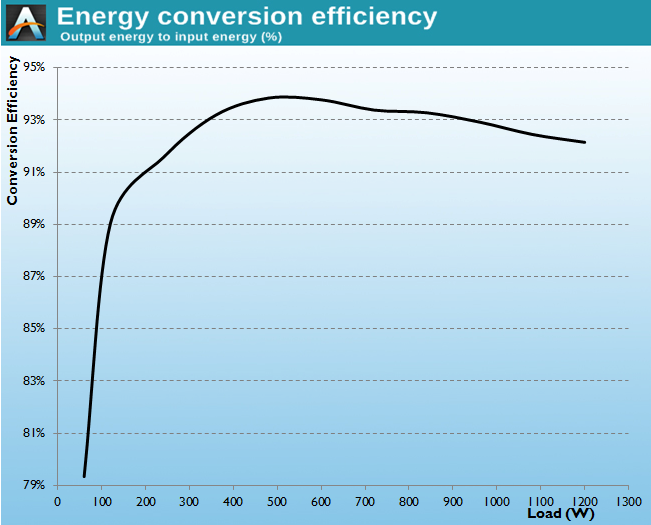
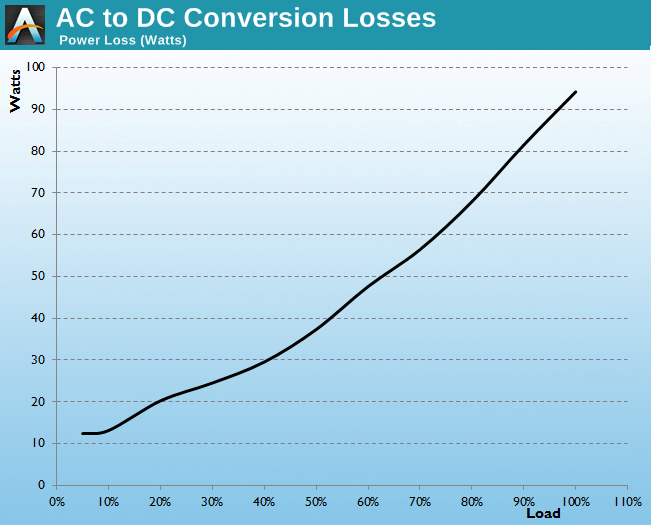
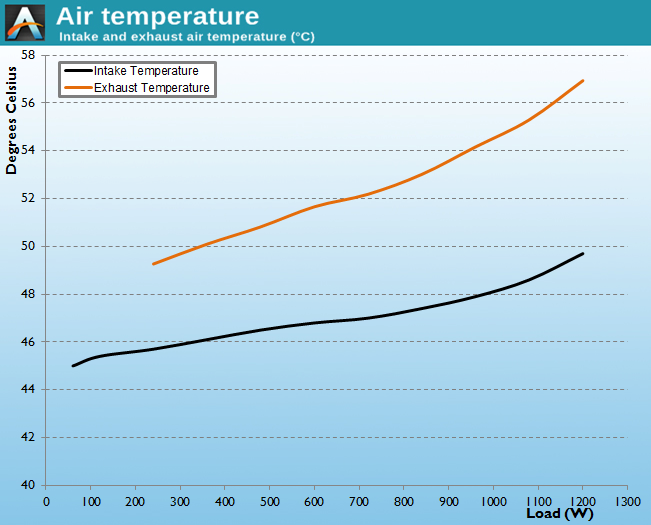
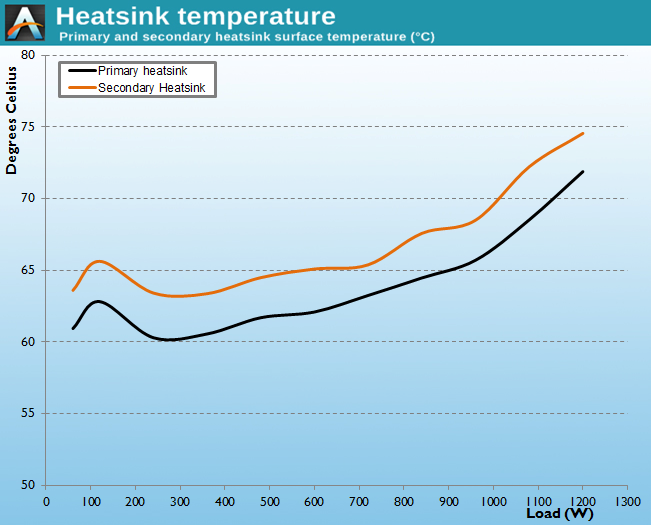
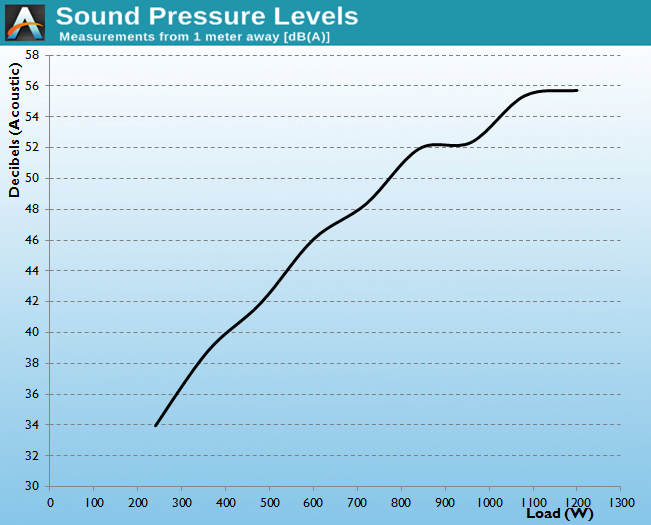








39 Comments
View All Comments
Impulses - Thursday, September 4, 2014 - link
I'm not sure I buy that NV and AMD are putting efficiency at the forefront, seems it's kinda cyclical for each ands then they regress.Case in point, I recently had to buy a new PSU because the 750W that could easily handle two AMD HD6950 in CFa couple years ago wouldn't be enough for two new R9 290. Ended up with a Seasonic X-1250 just because it was on sale (was looking at 1K units otherwise).
Seasonic's biggest competition seems to be themselves (they now have three top end lines? the Gold X models and two Platinum lines?) and the various brands that resell Seasonic designs (XFX etc).
romrunning - Thursday, September 4, 2014 - link
I'm curious - how much power does your system actually draw?A link here (http://www.anandtech.com/show/8422/amd-announces-r... said the R9 290 draws 250W. Even if they spike to 275-300W under heavy load, you still have 150W for everything else. Are you running a 220W AMD CPU or something?
Impulses - Friday, September 5, 2014 - link
I could maybe get away with the 750W unit, but I wasn't really looking forward to running it at 100% load thru hours of gaming, and/or unexpected crashes while OC'ing etc.DanNeely - Thursday, September 4, 2014 - link
There's something wrong with the -12V column in the table. 3A @ -12V would be 36 watts of power not 6. 3A also seems unusually high for a current generation model.E.Fyll - Thursday, September 4, 2014 - link
Thank you for pointing that out Dan. The 5VSB and -12V columns were reversed, that was a typo mistake on my part.WilbertCane29 - Friday, September 5, 2014 - link
I found this to be really interesting. Are there any more sources on this? I would like to know more about this.Oxford Guy - Wednesday, December 3, 2014 - link
Typical review site doublespeak:The power supply can be "ear splitting" and "be heard from rooms away" but:
"we do believe that very few users actually require their system to remain silent while it is heavily loaded."
Give me a freakin' break. 50+ db is related to a desire for silence how, exactly? Not having something cause someone to develop tinnitus during the warranty period has to do with a quest for silence how, exactly?
"it is known that such powerful units have a very limited target audience."
Yes, the deaf.
Oxford Guy - Wednesday, December 3, 2014 - link
It's long past time for these antique standards like ATX with 120mm fans be replaced. If you're going to provide 1000 watts of power or more, move to a new form factor. How about a 200mm fan with a vapor chamber?Think outside of the bloody box! And, stop apologizing for these poor thoughtless designs. This power supply is unsuitable for use out side of a server room.
Oxford Guy - Wednesday, December 3, 2014 - link
It pisses me off to no end to see the same regurgitation of anachronism year after year, with the most miniscule changes being hailed as great innovation. Why can't companies actually innovate?Make the entire top of a PC case a triple width 360mm radiator instead of these absurd tower designs with redundant narrow radiators and fans splattered all over the place, competing with each other. Link in the GPUs, the CPU, the motherboard VRMs, and the power supply with heat pipes and a giant vapor chamber. Do something instead of this piecemeal and pathetic series of attempts to shoehorn high wattage equipment into form factors that don't work.
I remember when Apple told people to drop their Apple IIIs onto desks to reseat the chips that popped out from heat — because Apple designed the case to be oh-so-pretty before it finished engineering the internals! This is the same nonsensical mentality that dominates the "enthusiast" equipment industry and review sites' appraisals. The assumption is that the form factors already exist and must be slavishly followed, no matter how idiotic the result.
But, while I sit around unemployed in disgust in the midst of cornfields I get to see the parade of banality continue...
I realize that Silverstone has done a bit with its triple and dual 180mm fan rotated designs but those are not adequate for really quiet computing with high wattage multiple GPU machines. People even suggest pairing blower GPUs with those cases. Blower GPUs! Blowers on GPUs should have been consigned to the relic bin 10 years ago. Sure... let's pair a high wattage part with a teeny tiny little fan and form factor. Then, let's put two or three into the system to double or triple the stupidity. That makes sense!
Linked heat pipes, linked radiators, big vapor chambers, single air path, the case acting as a heat sink as well... Centralized non-redundant non-competitive cooling mechanisms. That is the future, not more of the same 50+ db just for the power supply BS, teeny tiny fans, 5 or 6 airflow paths in different directions, and general anachronistic chaos disguised as cleverness.
I know it makes more money for manufacturers to keep people in the upgrade mouse wheel, trying to get a decent product by cobbling together all the half-hearted efforts but it's time to start delivering a holistic well-made product without paying Mac Pro prices or worrying about Apple's obsession with glamour.
Get with it, people.